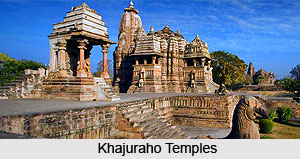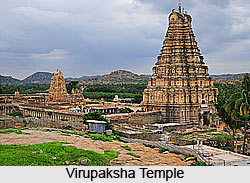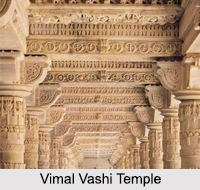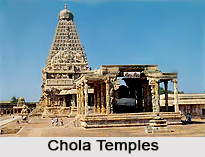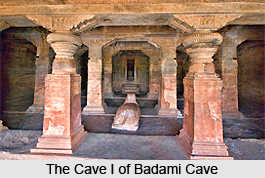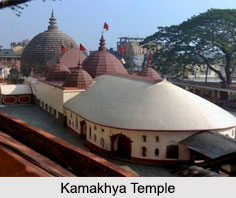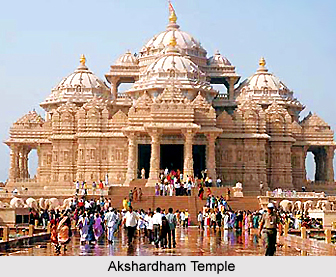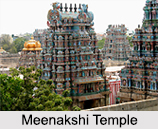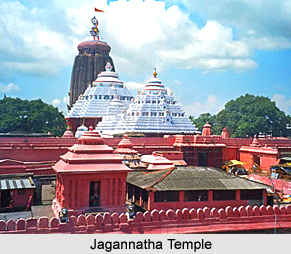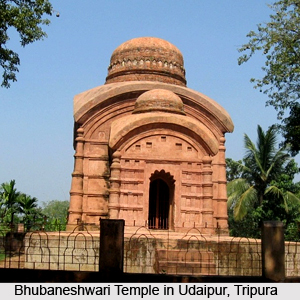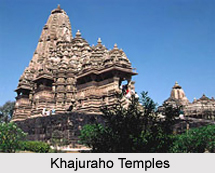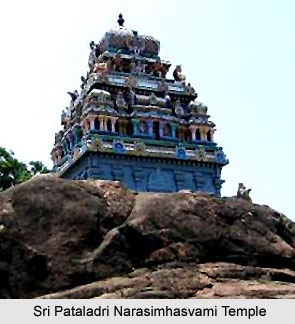 The legendary greatness of Sri Pataladri Narasimha temple is enhanced by the exceptional architectural trappings of the contemporary Pallava era. A stately magnificence is attached with the antiquity of the temple by the unusual architectural craftsmanship of the contemporary artists. The main sanctum of Lord Pataladri Navasimhasvami bears the clear evidence of the contemporary art. The entrance to the main sanctum is flanked by door-keepers (dvarapalakas) is a rock-cut shrine and has the flavor of the architecture, which was in vogue in the 7th century A.D. Immediately in front of this sanctum, which faces east, is erected a mandapa supported by many pillars of the Chola age as is evident from the architectural features as well as the presence of many important Chola inscriptions datable to the 10th century A.D.
The legendary greatness of Sri Pataladri Narasimha temple is enhanced by the exceptional architectural trappings of the contemporary Pallava era. A stately magnificence is attached with the antiquity of the temple by the unusual architectural craftsmanship of the contemporary artists. The main sanctum of Lord Pataladri Navasimhasvami bears the clear evidence of the contemporary art. The entrance to the main sanctum is flanked by door-keepers (dvarapalakas) is a rock-cut shrine and has the flavor of the architecture, which was in vogue in the 7th century A.D. Immediately in front of this sanctum, which faces east, is erected a mandapa supported by many pillars of the Chola age as is evident from the architectural features as well as the presence of many important Chola inscriptions datable to the 10th century A.D.
The images of the temple are no less fascinating. The images housed in the temple are also the best specimen of the brilliant architecture of the contemporary era. Enshrined in this cave is the awe-inspiring and magnificent image of Lord Ugra Narasimha with the third eye (trinetra) in the centre of His forehead. Pataladri Narasimhasvami, the presiding deity is seen wearing the Salagrama and Sahasranama garlands along with the Lakshmi hara. The deity is seated is a captivating posture with His right leg folded on a pedestal and left leg placed on the ground. This deity is four-armed and carries in His upper right and left hands the discus named Sudarsana chakra and the conch named Panchajanya respectively. His lower right hand is made in the posture of abhaya hasta, thereby representing an offering of ever-lasting protection to His devotees and His left hand is in the attitude known as uru hasta, resting on His lap. The processional deity (utsava-image) here of four-armed (Chaturbhuja) Vishnu surrounded by the deities like Sri Devi and Bhu Devi (Ubhaya Nachiyar) is affectionately called Prahlada Varadar. The vimana above this main sanctum, studded with beautiful stucco images is called Pranavakoti vimana. The Pranavakoti Vimana is a significant architectural specimen and reveals that architecture with stucco was highly in vogue during the Pallava era.
To the right of the rock-cut shrine of Lord Narasimha, is erected the consecrated sanctum dedicated to Goddess Lakshmi. Goddess Lakshmi here is known as Ahobilavalli Thayar just as in Ahobilam. This sannidhi, as well as the one for Andal which is to the left of the main sanctum, are not cave-shrines, but constructed at a later date as the historical researches reflect. These two shrines, both facing east, have guarded with a circumambulatory (pradakshina) passages around them, whereas, the main sanctum for Lord Pataladri Narasimhasvami. The sanctum for the presiding deity, Lord Pataladri Narasimhasvami is carved out of the granite hillock. The entire complex of the sanctum dedicated to the presiding deity is circumambulated by going around the entire cave-temple on the outside by ascending and descending a number of steps. This circumambulatory path is thus called by devotees as "giri-pradakshinam` (giri-valam), which means the circumambulation of the entire hillock. However this process of circumambulation has a special significance, because it is believed that if the entire sanctum is encircled then the god will be delighted and fulfilled the wish of the devotee.
Facing south, near the main sanctum-sanctorum, is stationed a small shrine where Lord Lakshmi Narasimha, along with an image of Vishvaksena, is enshrined. This image of Lord Lakshmi Narayana is exceptionally charming. The striking feature of this temple is that it houses the attractive images of the Azhvars, the pre-eminent Srivaishnava preceptor. Ramanujacharya and Manavala Mamuni are worshipped in the larger pillared mandapa at the entrance. Here, there is erected a small shrine dedicated for the worship of Garuda or Periya Tiruvadi which is directly facing towards Lord Narasimha. At the end of the road, perpendicular to the main entrance to this temple is a small shrine for Anjaneya or Siriya Tiruvadi. These sub shrines are the clear evidence of the exceptional architecture of the contemporary era.
The tenets of the Vaikhanasa Agama are followed with regard to pujas and rituals in this temple. The sacred-tank, situated a short distance from the temple is called Shuddha Pushkarini and the sacred tree (sthala-vriksha) here is popularly known as Parijatha tree which, with its beautiful and sweet-smelling flowers, can be seen by devotees as they ascend the steps to perform the giri-valam.
